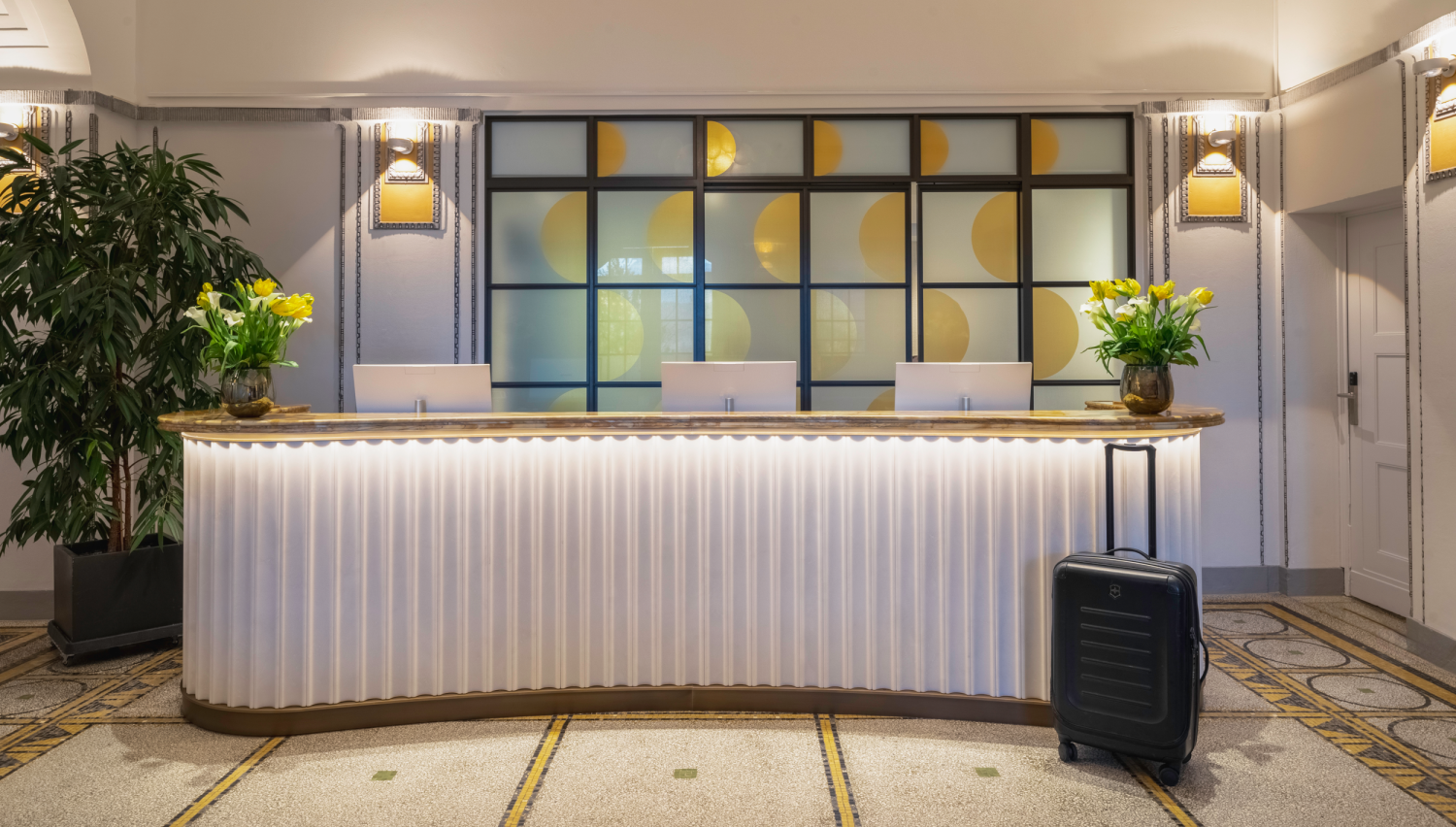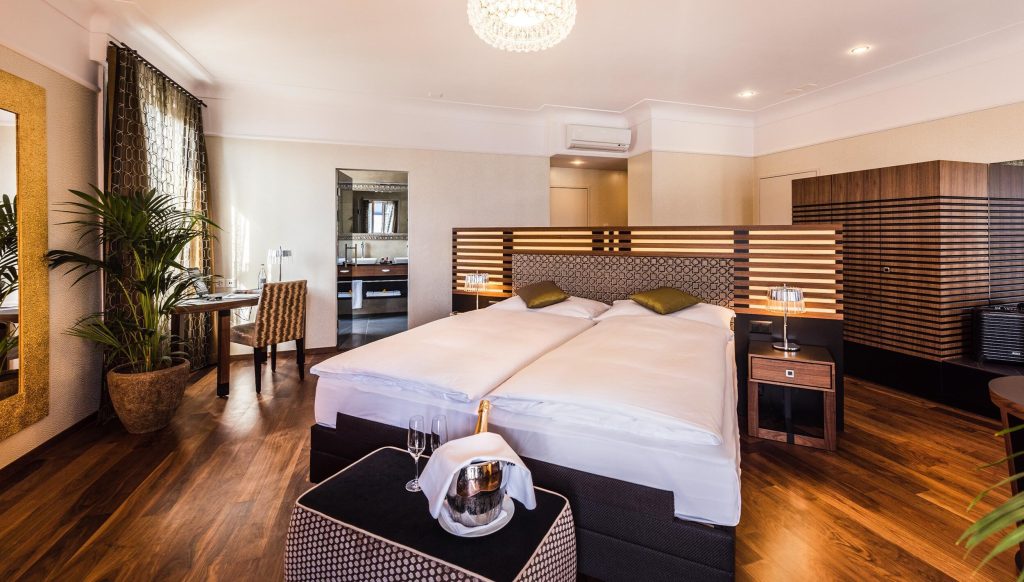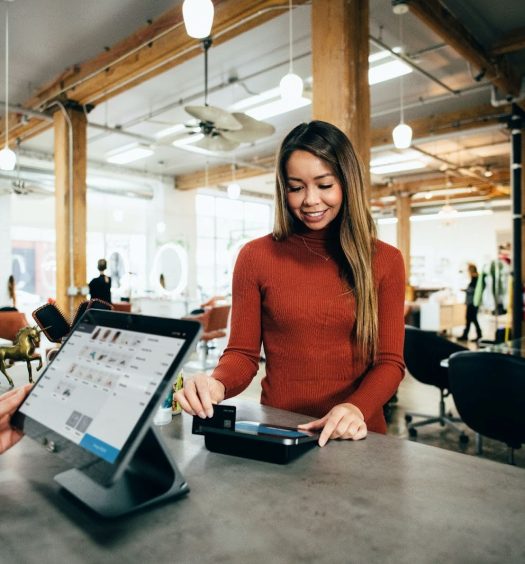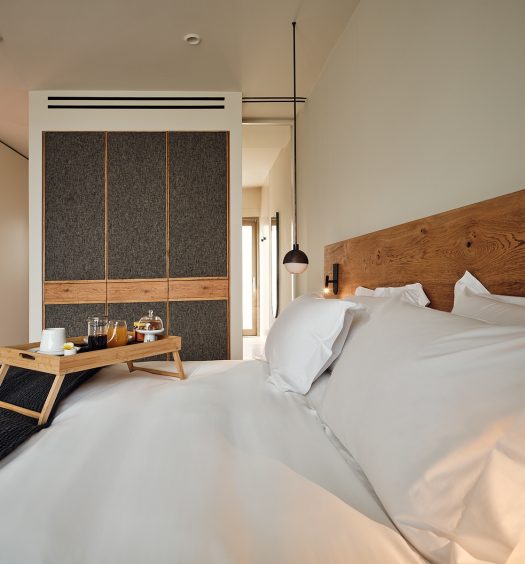SuitePad answers our questions about the case study of Art Deco Hotel Montana, a City Hotel in Switzerland that elevated its room value and guest experience through in-room tablets!
7 mins readIn the ever-evolving landscape of the hospitality industry, the pursuit of delivering an exceptional guest experience remains paramount. Among the myriad innovations that have emerged to redefine the standards of comfort and convenience, in-room tablets stand out as a transformative tool. These sleek and sophisticated devices have become a ubiquitous presence in modern hotel rooms, seamlessly integrating technology to elevate the overall guest experience.
In this Hotel Experts Talk, we will delve into the fascinating realm of in-room tablets and their profound impact on hospitality through a very special case study. We will explore how a City Hotel in Switzerland used these digital companions, not as gadgets, but as invaluable assets to empower guests to effortlessly access a wide array of services, control room features, and engage with the hotel environment like never before.
From ordering room service with a simple tap to adjusting room settings for optimal comfort, in-room tablets have redefined the notion of personalization and convenience. Hotelier Academy invited Susanne Krebs, Head of Marketing from SuitePad to discuss the Case Study of Art Deco Hotel Montana and how it incorporated In-Room Tablets in its Room Experience, enhancing guest satisfaction, and contributing to unforgettable stays.
Can you provide an overview of how the Art Deco Hotel Montana in Switzerland successfully integrated in-room tablets into its guest experience, and what motivated this decision?
The 4-star superior hilltop hotel overlooking Lake Lucerne first decided to switch to a digital solution to replace the traditional paper-based guest directories in the rooms. Having SuitePad tablets is an easy way to keep information about the hotel up-to-date and help keep guests happy because all the answers to their questions are at the touch of a button and in the comfort of their room. Guest communication plays a significant role in ensuring guest satisfaction.
To engage their guests, the hotel provides features on the SuitePad such as newspapers, a telephone, booking massages, and quick feedback. The hotel’s marketing department can also measure the average time spent on the SuitePad, which quickly became a marketing goal. They noticed a higher percentage of room service orders and other services that could have been neglected if not for the in-room tablet.
The way that the hotel shows its offers and services on the tablets is a true example of brand recognition. The Art Deco Hotel Montana has a very strong corporate identity with great imagery, making the SuitePad a bespoke solution for them. In 2022, they had a new design and could quickly update the new branding on all tablets.
What specific features and services did the hotel offer through the in-room tablets, and how did these enhancements contribute to guest satisfaction and comfort?
According to the Marketing team, the room service feature is the most popular. Second to that is the pillow menu, which gives the guests an overview of different pillows they can order directly to their room. They also have a hotel shop tile on the tablets, which is one of the only ways the hotel can showcase their products, and guests have the chance to buy them directly via their SuitePad tablets.
Since 2022, they have added new features such as a late checkout tile and the ability to extend their stay with just a few clicks.
Another popular feature is the “Green Option,” which offers guests the choice to skip room cleaning on the days of their choice. This not only saves the hotel time and money but also contributes to environmental sustainability.
During Covid, the hotel introduced virtual video tours and tablet-based room instructions, such as how to use the Whirlpool. This feature stuck around after Covid because guests continued to find it useful.
In terms of operational efficiency, how did the implementation of in-room tablets impact the hotel’s staff and daily operations?
The new technology helped give an easier and faster service throughout the whole property. The front desk staff introduces the tablet to guests during check-in, saving time to address other issues.
On the Marketing side, there is also a lot of time saved as they can update any new or seasonal information on all SuitePads at once with just one click. The days of reprinting menus and guest directories for each room every season are now a thing of the past.
As for day-to-day operations, the quick feedback feature (now part of daily business) directly influences the guests’ stay. The hotel can quickly reach out if guests have negative feedback and change their experience before they leave.
Were there any challenges or obstacles encountered during the transition to in-room tablets, and how were they overcome?

There were no initial obstacles during the implementation of the SuitePads. The process is well defined, and onboarding can take about 6 to 8 weeks.
Can you share insights into the educational aspect of this transformation? How did the hotel educate both staff and guests about the new technology?
The management believes that gathering ideas and feedback from their staff is crucial when it comes to digital solutions. After all, they are the backbone, the soul of the hotel, shaping its distinct quality. Therefore, the end goal of all digital solutions must be to make the work of these employees easier.
The hotel reflects that it is a tremendous relief to make adjustments with just two clicks instead of reprinting and distributing entire guest directories. With up-to-date and concise information readily available, guests are less likely to call the reception, and the staff has more time to address complex issues or engage in personal interactions.
*Sponsored
 SuitePad: The most efficient way to communicate with your hotel’s guests
SuitePad: The most efficient way to communicate with your hotel’s guests
SuitePad is created with the needs of modern hoteliers in mind, featuring all the main services of a modern tablet, as well as extra applications that enhance guest communication, reduce costs, and optimize processes.
Suitepads help you achieve higher sales revenue, as you’ll be able to let your guests book hotel services such as room service, wellness appointments, or sightseeing tours directly from their room, get your hotel shop involved by selling souvenirs or hotel vouchers, or allow your guests to book their next stay – without any third-party commission. You can also generate additional revenue through partner advertising such as restaurants, shops, hire-car services, and tourism associations.
What measurable results or key performance indicators have demonstrated the success of incorporating in-room tablets in the guest experience at Art Deco Hotel Montana?
The have saved a lot of time and print material. The hotel no longer has to print welcome letters, information letters, room service menus, and more. The cost savings are very beneficial.
As an educational takeaway, what advice or best practices would you offer to other hotels looking to implement similar technology-driven enhancements to improve guest satisfaction and revenue?
Technology is a big help for hotels in being more sustainable by cutting down on print materials, as we mentioned earlier. But its main perk is the ability to try things out easily. It’s a cheaper, greener, faster, and simpler way to test, learn from mistakes, try again, and make improvements.
All hotels must always continuously improve and implement new features. The Art Deco Hotel Montana is in the process of implementing the BYOD (Bring-Your-Own-Device) feature from SuitePad, which allows them to send pre-stay emails before arrival and send the guests the hotel’s information through the SuitePad installation before they arrive.







